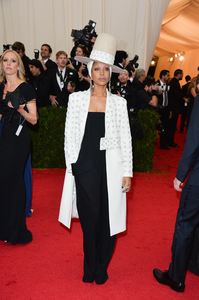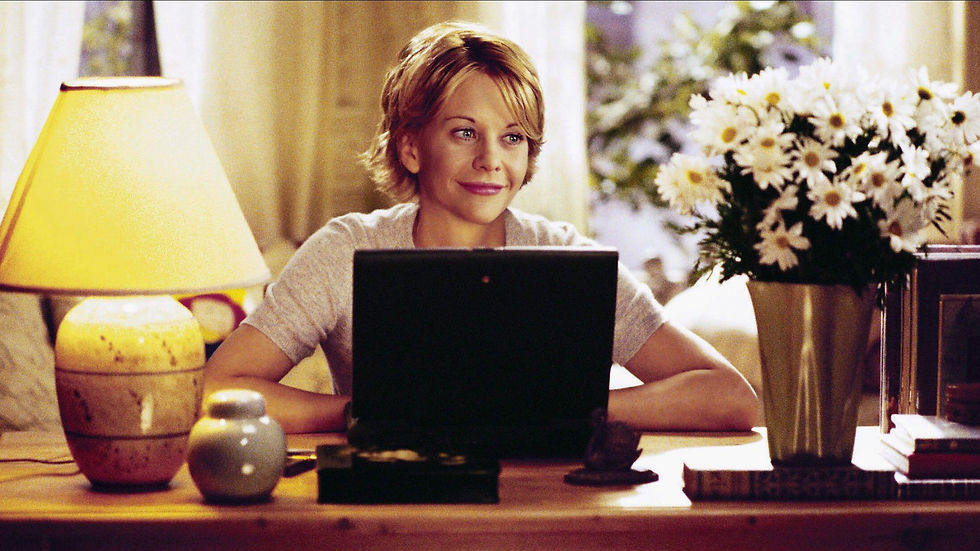Nice to Meet The MET: Why You Should Go To The Metropolitan Museum of Art
- Rachel Huss
- Feb 4, 2022
- 7 min read
Updated: Oct 5, 2023

(Image courtesy of MET. Image depicts The MET)
When I was in the tenth grade, my English teacher assigned every student to write about an artist, my teacher assigned me Edgar Degas. Degas, a founding member of the Impressionist Salon, is perhaps best known for his ballerina paintings. During the research portion of the paper, I used the Metropolitan Museum of Art as my primary, secondary research base. The MET's research resources allowed me to conduct independent research about Degas's behavior. The paper took on a new dimension when I realized that art was the portal into the artist's psyche. I learned the rationale of Degas's philosophies, biases, and tenants through the Metropolitan Museum of Art's research area.

(Image courtesy of MET. Image depicts Edgar Degas's Dancers, Pink and Green circa 1890)
Later that summer, my mom surprised me with a girls' trip to New York City for my sixteenth birthday. The first words I muffled from being woken up as, " We're going to the MET." The Metropolitan Museum of Art of New York City is considered one of the best museums in the world. It houses works from across eons and civilizations. But there is an anteroom full of Degas in a corner on the Impressionist floor. As I stared at the paintings and statues, I began to tear up, thinking how I had come full circle at the moment.

(Image courtesy of me. Image depicts my mom, Laurie, and I in front of the musical Matilda)
Since the inception of this blog, it's been a goal of mine to interview someone from the museum. I am lucky to announce that I have met the goal. I had the opportunity to speak with Ann B., Senior Manager for Media Relations at The Metropolitan Museum of Art, to learn more about why the museum is a cultural landmark.

(Logo courtesy of the MET)
1. Why should someone visit the museum?
The museum offers 5000 years of art history from across the globe and a way for people to connect with the creative culture of humanity throughout time.
(Images courtesy of the MET. Top left image depicts "Portrait of a queen regent trampling a captive (Stela 24). Unrecorded Maya artists, Sa’aal (Naranjo, Guatemala). January 22, A.D. 702, Maya date: 9.13.10.0.0 7 Ajaw 3 K’umk’u. Limestone. Lent by the Republic of Guatemala in celebration of the Bicentennial of Independence, 2021 (L.2021.28.1). MUNAE 15213, Registro 1.1.1.11100. Courtesy Ministerio de Cultura y Deportes de Guatemala. © Archivo Digital MUNAE". Top center image shows the Amor Caritas by Augustus Saint-Gauden circa 1880–98, cast 1918. Top right image depicts the Queen Mother Pendant Mask: Iyoba by the Endo People. Bottom left image is of Aquamanile in the Form of a Griffin circa ca. 1425–50. Bottom Center image shows "The Elephant Clock", Folio from a Book of the Knowledge of Ingenious Mechanical Devices by al-Jazari Calligrapher:Farrukh ibn `Abd al-Latif and Author: Badi' al-Zaman ibn al-Razzaz al-Jazari (Northern Mesopotamia 1136–1206 Northern Mesopotamia). Bottom right image is George Seruat's Study for "A Sunday on La Grande Jatte"1884. For more information about these images, please go to https://www.metmuseum.org/art/collection )
2. How has the museum evolved since its founding?
The Museum was founded shortly after the Civil War by a group of businesspeople inspired by the cultural organizations in Paris and Europe. These business people felt that the United States in New York deserved a museum that would rival the Lourve. They started the Museum without any collection, money, or building. All they had was an idea. Since then, private philanthropy, passionate collectors, and knowledge curators have created a collection that's now over a million objects in the building that spans 2 million square feet. These objects represent cultures near and far across time and provide new ways of interpreting materials.

(Image courtesy Frank Leslie's Weekly Opening reception in the picture gallery at the Metropolitan Museum of Art, 681 Fifth Avenue, February 20, 1872. Wood-engraving published in Frank Leslie's Weekly, March 9, 1872 (Frank Leslie, 1820 - 1880). Image is in the Public Domain)
3. How does the museum honor the life of artists whose work are represented in the museum?
There are a few different ways. First, The MET's collection contains over tens of thousands of objects created by people we are still learning about. As a result, not every object has a maker assigned to it. We don't know the creator's biography. So, there is a lot of effort in presenting and interpreting the work with the understanding of the following: the context (from which it came and the different perspectives through which we can understand an object), time/place of creation, and what it means/represents to humanity now.

(Image courtesy of the MET. Image depicts "one of the few surviving lamps decorated with Jewish symbols. It displays a menorah flanked by an etrog (citron) and a lulav (palm branch), both indistinct circa350-450 CE")
4. Speaking of evolution, how has the museum evolved in the wake of the COVID 19 pandemic?
The Met was the first Museum in New York City to close in March 2020. The Museum closed of its own volition. It wasn't at that point where closures were mandated to close, but it felt like it was the safest and the right thing to do for staff, volunteers, and visitors. The Museum was closed through the end of August 2020. This was the longest stretch in the Museum's history for an unplanned closure. In 2020, the muse was supposed to celebrate its 150th anniversary. There were many exhibitions, programs, activities, and celebrations planned to commemorate this anniversary.

(Image courtesy of MET)
Once the pandemic hit, the closure was a time where the Museum reflected on its pandemic response and challenges associated with its closure. Some of the questions we had to face include: How does this institution persist through the budget challenges when there are no visitors (no revenue coming in)? How do we keep the objects safe and Museum? How can we keep pursuing the Museum's mission in this time, and to what extent is that possible and appropriate? We faced these challenges through the following measures. First, we had a group come in and check on the Museum's operations during the closures. This group volunteered to go into the Museum at the height of the pandemic to check objects, building, and safety.
(Video courtesy of MET)
As everybody was working at home, the museum staff wanted to connect people to everything the Museum has to offer. Our scholars who were writing their catalog and papers and people creating virtual digital content helped engage with people while at home. In terms of what the Museum has to offer, we connected the scope of human history in the palms of people's hands as they explored visual arts from the comfort and safety of their homes.

(Media courtesy of Wix)
When the Museum did reopen, it was a huge moment. It was incredibly emotional for a lot of people. The first group of people came in; there were tears, shouts of joy, and long lines of people waiting to go in. People couldn't wait to return to this incredible collection and visit their favorites. The reopening maybe let people see everything with fresh eyes. Once you don't have access to something, it helps you remember how valuable it is. The Museum adopted all the guidance in place to keep our visitors face during the visit. This included maintaining visitors six feet apart, limited capacity, hand sanitizers everywhere, and food and beverage services closure.

(Image courtesy of Hakim Bishara)
5. What are the different ways the museum engages with different generational stakeholders?
The Museum saw many people who might have previously not engaged in online content become engaged with it. Consequently. Online content widened our audience and created a new fluency or comfort level for many people to engage with the Museum's programs online. The Museum also realized that it's an international organization based in New York City. It's New York's hometown museum, but it's a symbol of creativity from around the world. Before the pandemic, the Museum had a huge international audience that would travel to New York to see the Museum. The move to virtual content meant that we could be accessible for domestic and international audiences. Thus, we made our content premiering in the morning, so more people have the opportunity to see it.
(Video courtesy of MET)
6. What's the relationship between pop culture and the museum from someone in who works in communications?
The Metropolitan Museum Of Art is a landmark. The Museum is the representation of New York City's arts and culture. The Museum's recognizability is derived from its authority and credibility as this leading insertion. When people think of New York City, people think of The Empire State Building, Metropolitan Museum, and Wall Street. These landmarks are iconic visuals of the multifaceted nature of New York City.

(Blake Lively and Leighton Meester (aka Serena van der Woodsen and Blair Waldorf) hold court on the steps. Image courtesy of ARNALDO MAGNANI GETTY IMAGES)
7. How is the Met Gala a reflection of the museum?
The Met Gala is a fundraiser. The Museum relies on private philanthropy to keep it going. During non-pandemic times, the MET hosts multiple fundraising events throughout the year. The Gala for the Costume Institute happens to be the most prominent and most high profile. The Gala has a theme that corresponds to the exhibition and showcases the nexus between art and fashion. The proceeds for the Gala cover the operating costs of the Costume Institute throughout the year (staff, conversation, exhibitions, and scholarship work).
(Top Row: Arianna Grande in Vera Wang (2018) Ima(2003) Image courtesy of Getty Images. Zendaya and Law Roach in 974) Image courtesy of Getty Images. Naomi Campbell in Versace(1990) Image courtesy of Getty Images. Kim Kardashian West and Kayne West in Balmain(2016) Image courtesy of Larry Busacca.
Second Row: David Bowie and Iman in Calvin Klein(2003) Image courtesy of Getty Images. Selena Gomez in Vera Wang(2015) Image courtesy of Larry Busacca. Zendaya and Law Roach in Tommy Hilfiger and Judy Leiber (bag) (2019) Image courtesy of RABBANI AND SOLIMENE PHOTOGRAPHY.
Third Row: Lupita Nyongo'o in Calvin Klein(2016)Image courtesy of Taylor Hill. Taylor Swift in Louis Vuitton(2016) Image courtesy of Kevin Mazur.
Fourth Row: Lady Gaga in Dresses: Brandon Maxwell Jewelry: Tiffany & Co.Sunglasses: Linda Farrow Bag: Judith Leiber Couture (2019) Image Courtesy of Angela Weiss.
Bottom Row: Princess Dianna in Dior(1995) Image courtesy of Getty Images. Erykah Badu in Givenchy(2014) Image courtesy of George Pimentel. Gal Gadot and Clare Waight Keller in Givenchy(2019) Image courtesy of Getty Images.)
8. What is the future of the museum?
The Museum is a perpetual institution with the mission of collecting, presenting, and perceiving the visual creativity of humankind. The Museum's leadership and scholars are driving this mission as they continue to evolve and evaluate how the institution continues to be a museum of its time, speak to audiences in the present tense, and ensure that the Museum can learn from and respond to the needs and interests of audiences.

(Image courtesy of Visitors viewing Emanuel Leutze’s Washington Crossing the Delaware (1851)
Roderick Aichinger (right). Composite image © The Metropolitan Museum of Art, New York1910/2019).














































Comments